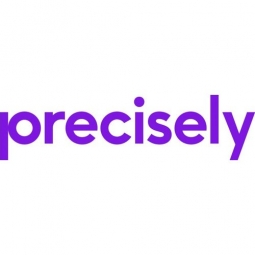AAA Life Insurance Drives Innovation by Integrating Mission-Critical IBM i Data into AWS Environment

公司规模
Large Corporate
地区
- America
国家
- United States
产品
- Precisely Connect
- Amazon Redshift
- Amazon S3
- Amazon DMS
- Amazon PostgreSQL
技术栈
- IBM i
- AWS
- Change Data Capture (CDC)
- Data Integration
实施规模
- Enterprise-wide Deployment
影响指标
- Customer Satisfaction
- Digital Expertise
- Productivity Improvements
技术
- 分析与建模 - 实时分析
- 应用基础设施与中间件 - 数据交换与集成
- 平台即服务 (PaaS) - 数据管理平台
适用行业
- 金融与保险
适用功能
- 商业运营
用例
- 实时定位系统 (RTLS)
服务
- 云规划/设计/实施服务
- 系统集成
关于客户
AAA Life Insurance is a prominent player in the insurance industry, known for its commitment to providing financial protection to its customers. With over 1.5 million active policies and more than 500 employees, the company generates over $500 million in annual revenue. AAA Life has been a trusted partner for decades, helping individuals and families secure their financial future. The company is dedicated to innovation and modernization, recognizing the importance of staying competitive in a rapidly evolving market. By integrating advanced analytics solutions and moving IT operations to the cloud, AAA Life aims to enhance its product offerings and improve the speed and flexibility of its services. The company's core insurance policy management system, Life Plus, operates on the IBM i platform, which, while powerful, presents challenges in data integration and cloud migration. To address these challenges, AAA Life embarked on a strategic IT modernization journey, partnering with AWS and Precisely to integrate its mission-critical data into a modern cloud environment.
挑战
AAA Life Insurance faced significant challenges in modernizing its IT infrastructure, primarily due to its reliance on IBM i systems for core processing. The company's core insurance policy management system, Life Plus, operated on the IBM i platform, which, despite its computational speed and reliability, posed difficulties in migrating data to modern cloud-based systems. The unique architecture of IBM i systems made data integration complex, hindering the company's ability to leverage advanced analytics and cloud solutions. To remain competitive and meet market expectations, AAA Life needed to develop a strategic IT modernization plan that would encompass its mission-critical LifePlus data, provide a practical pathway to the cloud, and support future business requirements.
解决方案
AAA Life Insurance partnered with AWS to embark on its cloud modernization journey, centering its solution on the Amazon Redshift data warehouse powered by scalable Amazon S3 repositories. This technology base allowed AAA Life to realize the speed, scale, and cost benefits of using AWS infrastructure, enabling the rollout of advanced analytics and reporting applications based on unified and accessible datasets. To address the challenge of integrating its LifePlus data, AAA Life collaborated with Precisely, an AWS and IBM partner known for its high-performance data integration solutions. Precisely Connect was implemented to efficiently and securely integrate IBM i data from the LifePlus system into the AWS environment in real-time and at scale. The solution involved using Change Data Capture (CDC) to land IBM i DB2 data in the Amazon PostgreSQL environment, from where Amazon DMS replicated the data to the Redshift environment. This seamless integration process allowed AAA Life to utilize its data for analytical and operational processes without requiring specialized IBM skills. The proven Precisely solution provided native support for leading streaming platforms, enabling real-time data pipelines that integrated data from multiple enterprise sources in a single workflow.
运营影响
数量效益

Case Study missing?
Start adding your own!
Register with your work email and create a new case study profile for your business.
相关案例.

Case Study
Real-time In-vehicle Monitoring
The telematic solution provides this vital premium-adjusting information. The solution also helps detect and deter vehicle or trailer theft – as soon as a theft occurs, monitoring personnel can alert the appropriate authorities, providing an exact location.“With more and more insurance companies and major fleet operators interested in monitoring driver behaviour on the grounds of road safety, efficient logistics and costs, the market for this type of device and associated e-business services is growing rapidly within Italy and the rest of Europe,” says Franco.“The insurance companies are especially interested in the pay-per-use and pay-as-you-drive applications while other organisations employ the technology for road user charging.”“One million vehicles in Italy currently carry such devices and forecasts indicate that the European market will increase tenfold by 2014.However, for our technology to work effectively, we needed a highly reliable wireless data network to carry the information between the vehicles and monitoring stations.”

Case Study
Safety First with Folksam
The competitiveness of the car insurance market is driving UBI growth as a means for insurance companies to differentiate their customer propositions as well as improving operational efficiency. An insurance model - usage-based insurance ("UBI") - offers possibilities for insurers to do more efficient market segmentation and accurate risk assessment and pricing. Insurers require an IoT solution for the purpose of data collection and performance analysis

Case Study
Smooth Transition to Energy Savings
The building was equipped with four end-of-life Trane water cooled chillers, located in the basement. Johnson Controls installed four York water cooled centrifugal chillers with unit mounted variable speed drives and a total installed cooling capacity of 6,8 MW. Each chiller has a capacity of 1,6 MW (variable to 1.9MW depending upon condenser water temperatures). Johnson Controls needed to design the equipment in such way that it would fit the dimensional constraints of the existing plant area and plant access route but also the specific performance requirements of the client. Morgan Stanley required the chiller plant to match the building load profile, turn down to match the low load requirement when needed and provide an improvement in the Energy Efficiency Ratio across the entire operating range. Other requirements were a reduction in the chiller noise level to improve the working environment in the plant room and a wide operating envelope coupled with intelligent controls to allow possible variation in both flow rate and temperature. The latter was needed to leverage increased capacity from a reduced number of machines during the different installation phases and allow future enhancement to a variable primary flow system.

Case Study
Automated Pallet Labeling Solution for SPR Packaging
SPR Packaging, an American supplier of packaging solutions, was in search of an automated pallet labeling solution that could meet their immediate and future needs. They aimed to equip their lines with automatic printer applicators, but also required a solution that could interface with their accounting software. The challenge was to find a system that could read a 2D code on pallets at the stretch wrapper, track the pallet, and flag any pallets with unread barcodes for inspection. The pallets could be single or double stacked, and the system needed to be able to differentiate between the two. SPR Packaging sought a system integrator with extensive experience in advanced printing and tracking solutions to provide a complete traceability system.

Case Study
Transforming insurance pricing while improving driver safety
The Internet of Things (IoT) is revolutionizing the car insurance industry on a scale not seen since the introduction of the car itself. For decades, premiums have been calculated using proxy-based risk assessment models and historical data. Today, a growing number of innovative companies such as Quebec-based Industrielle Alliance are moving to usage-based insurance (UBI) models, driven by the advancement of telematics technologies and smart tracking devices.
Case Study
Enhancing Security and Compliance in Remitly's Global Money Transfer Service with Fastly
Remitly, an online remittance service, was faced with the challenge of securing its proprietary global transfer network. The company needed a security solution that could meet PCI requirements and protect customers' sensitive transactions through its mobile application. The solution had to be capable of defending against new and emerging attack types without impacting performance. Remitly also had to deal with irregular traffic patterns, such as a sudden spike in account transfers from a small network segment on the Pacific coastline of South America. The company needed to determine in real time whether such traffic indicated an attack or valid requests. A traditional web application firewall (WAF) would not be able to distinguish this traffic, potentially leading to customer frustration if the IP was blacklisted.






